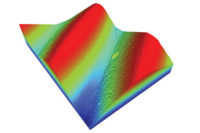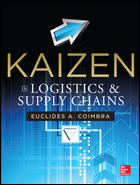
Today, 3-D profilometers, white light interferometers and microscopes are used to analyze all types of surfaces. Source: Digital Surf
Traditional measurement of surface texture using 2-D profilometers has major limitations. It gives satisfactory results for isotropic surfaces that present identical features regardless of the direction of measurement. The method also can be applied to some anisotropic surfaces in accordance with ISO 4288, such as turned surfaces with representative profiles that are perpendicular to tool marks. But it does not provide a general solution.
Today, 3-D profilometers, white light interferometers and microscopes are used to analyze all types of surfaces, characterizing local defects-such as buckles, craters and flakes-often not detected by a simple profile measurement, improving understanding of functional phenomena.
Initially, instrument manufacturers proposed different sets of nonstandardized 3-D parameters extrapolated from 2-D parameters. Work on standardization only began in the 1990s.
Following the European Surfstand report in 2002, ISO committee TC213 voted for the creation of a new work group, WG16, and gave it responsibility for the new standard on 3-D areal surface texture. The group met for the first time in Cancun in January 2003 and worked for four years on the definition of the new standard, ISO 25178.
The New ISO 3-D Parameters
Henceforth, surface texture parameters will be defined in 3-D first, with 2-D as a special case. A coherent set of definitions with a rigorous mathematical basis will replace extrapolated concepts.The new parameters begin with a capital S or V for certain functional parameters. Numerous filters are now available for application before the calculation of a parameter, such as Sq, and so 3-D parameters, unlike 2-D parameters, do not have prefixes that distinguish between raw, roughness and waviness components.

3-D amplitude parameters describe amplitude or height distribution. Sz is defined as the maximum height of the surface and St disappears. Source: Digital Surf
Spatial Parameters
Isotropic and anisotropic surfaces are distinguished by applying the Fourier transform and the autocorrelation function. The image obtained from the autocorrelation function includes a central peak, accompanied by secondary peaks in some cases. The ratio Rmin/Rmax of the maximum and minimum radii of the central peak, obtained by thresholding, is a good indicator of isotropy. It is used to calculate the Str parameter-the texture aspect ratio of the surface-in the new standard. For a fully isotropic surface, Str = 1.In the new standard Rmin is represented by the parameter Sal (auto-correlation length), expressed in micrometers.
The parameter Std, texture direction of the surface, expressed in degrees, is defined as the angle of the maximum of the polar spectrum.

3-D bearing ratio parameters are used to establish the bearing ratio and the height distance between two bearing ratios (Smc is the inverse of Smr). Source Source: Digital Surf
Functional Parameters
The functional characterization of 3-D surface texture is of fundamental importance in tribological studies of mechanical surfaces that are in contact with other surfaces, particularly in the automotive industry.
The 3-D spatial parameters for ISO 25178 are shown here. Source: Digital Surf

The 3-D functional volume parameters for ISO 25178 are shown here. Source: Digital Surf
Feature Parameters
2-D graphical analysis of motifs, developed by French engineers in the 1970s, was applied successfully to find relationships between peak and valley locations and functional requirements. It was incorporated into ISO 12085 in 1996.
The 3-D feature parameters for ISO 25178 are shown here. Source: Digital Surf
The feature parameters unveil new horizons in the characterization of functional surfaces. Surface segmentation will probably be one of the major tools used in 3-D surface texture characterization in the future.


